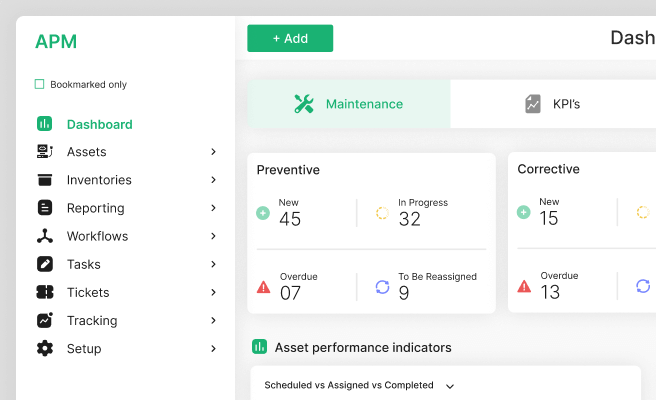A/B Testing
<p>A/B testing, also known as split testing, is a method used to compare two versions of a webpage or app against each other to determine which one performs better. It's a crucial technique for making data-driven decisions to improve user experience and increase conversions.</p>
<p>Historically, A/B testing has been a staple in digital marketing and product design, enabling companies to test hypotheses about user behavior and preferences. By presenting one group of users with Version A and another group with Version B, organizations can analyze performance metrics such as click-through rates, sign-ups, or sales to determine the more effective version.</p>
<h2>Importance of A/B Testing in Product Design</h2>
<p>A/B testing plays a vital role in product design, especially for those in the software climate-tech sector. It allows product managers and designers to validate design choices and optimize features to meet user needs effectively. This method helps in achieving product-market fit and scaling user adoption without the guesswork.</p>
<h3>Components of A/B Testing</h3>
<p>Several key components are essential for a successful A/B test:</p>
<ul>
<li><b>Hypothesis:</b> A clear, testable statement about what you expect to happen.</li>
<li><b>Variants:</b> The different versions of the webpage or app being tested.</li>
<li><b>Metrics:</b> The criteria used to measure the success of each variant, such as conversion rate or user engagement.</li>
<li><b>Sample Size:</b> The number of users included in the test to ensure statistically significant results.</li>
</ul>
<h3>Benefits of A/B Testing</h3>
<p>There are numerous benefits to incorporating A/B testing in your product design process:</p>
<ul>
<li><b>Data-Driven Decisions:</b> Make informed decisions based on actual user data rather than assumptions.</li>
<li><b>Improved User Experience:</b> Identify the design elements that resonate most with users, enhancing their experience.</li>
<li><b>Increased Conversion Rates:</b> Optimize your designs to drive user actions, such as sign-ups, purchases, or downloads.</li>
<li><b>Reduced Risk:</b> Test changes on a small scale before a full-scale rollout, minimizing potential negative impacts.</li>
</ul>
<h3>Challenges and Solutions</h3>
<p>While A/B testing offers significant advantages, it also presents challenges. One common issue is achieving statistically significant results, especially for smaller sample sizes. To overcome this, companies can use tools like <a href="https://optimizely.com" style="color:#2896FF; text-decoration:underline;">Optimizely</a> or <a href="https://vwo.com" style="color:#2896FF; text-decoration:underline;">VWO</a> to run tests efficiently and analyze data accurately.</p>
<h3>Real-World Examples</h3>
<p>In the climate-tech industry, A/B testing can be particularly impactful. For example, a carbon capture company might test different landing page designs to see which one better communicates their technology's benefits and drives more inquiries from potential partners and investors. Similarly, an AgTech startup might use A/B testing to identify the most effective way to present data on crop performance to farmers.</p>
<p>An example outside of climate tech is Netflix, which uses A/B testing extensively to optimize everything from the layout of its homepage to the thumbnails displayed for each show. This has led to significant increases in user engagement and retention.</p>
<h2>Implementing A/B Testing</h2>
<p>To implement A/B testing effectively:</p>
<ul>
<li><b>Define Your Goals:</b> Clearly articulate what you want to achieve with the test, such as increasing sign-ups or improving user engagement.</li>
<li><b>Create Variants:</b> Develop different versions of the element you want to test, ensuring they differ enough to potentially impact user behavior.</li>
<li><b>Select Metrics:</b> Choose the key performance indicators (KPIs) that will help you measure the success of each variant.</li>
<li><b>Run the Test:</b> Use an A/B testing tool to split your audience and present each group with a different variant.</li>
<li><b>Analyze Results:</b> Collect and evaluate data to determine which variant performs better, and use these insights to inform future design decisions.</li>
</ul>
<h3>Tools for A/B Testing</h3>
<p>There are several tools available that can help streamline the A/B testing process. Popular options include <a href="https://www.google.com/analytics/experiments" style="color:#2896FF; text-decoration:underline;">Google Optimize</a>, <a href="https://optimizely.com" style="color:#2896FF; text-decoration:underline;">Optimizely</a>, and <a href="https://vwo.com" style="color:#2896FF; text-decoration:underline;">VWO</a>. These tools offer features like user segmentation, real-time reporting, and integration with other analytics platforms.</p>
<h2>Conclusion</h2>
<p>A/B testing is an invaluable tool for product managers and designers looking to optimize user experience and drive conversions. By leveraging data to make informed decisions, companies can enhance their digital products and achieve better outcomes. For those in the climate-tech sector, A/B testing can be particularly beneficial in validating design choices and effectively communicating the value of their innovations.</p> <p>Increase user engagement that converts your demos into sales. Optimise your UX strategies with our audits.
<p>Fill out the <a href="https://tally.so/r/n97pxQ" style="color:#2896FF; text-decoration:underline;">UX Audit form</a> to get started. Ready to discuss your needs? <a href="https://cal.com/akhilak/what-if-design?duration=25" style="color:#2896FF; text-decoration:underline;">Book a consultation call</a> with us today.</p></p>

Let's scale your impact with great design.
Free consultation, no sales pitch
Thank you! Your submission has been received!
Oops! Something went wrong while submitting the form.
Let’s talk
Nothing great is built alone.
Let’s connect about your vision, our work and how we can collaborate.
Get in touch

